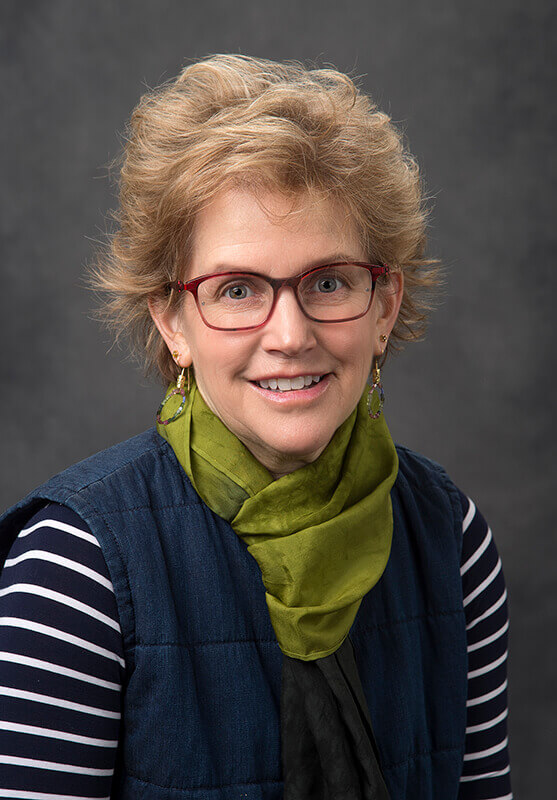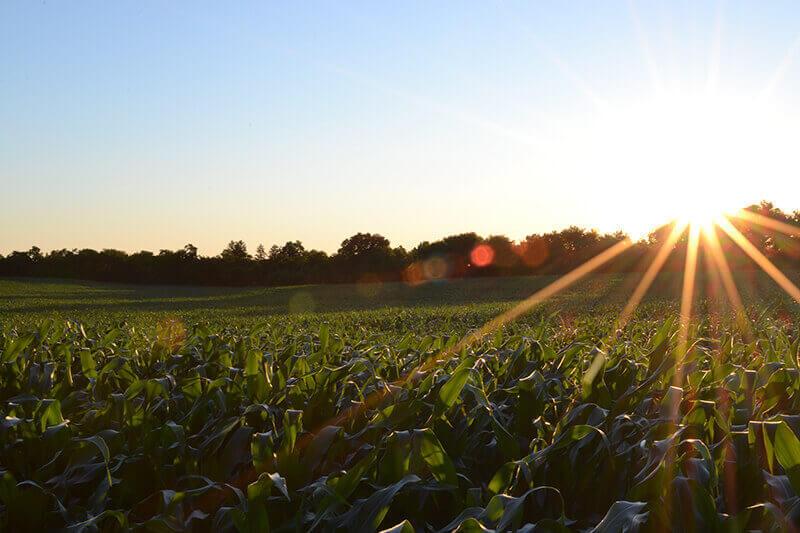April 9, 2019
How to feed the world and preserve the environment

WEST LAFAYETTE, Ind. — Farmers bear much of the burden for growing the food to feed
billions of people as the world’s population continually trends upward.
But to do so, those farmers have to keep crops healthy and high-yielding. That necessitates using fertilizers and pesticides, which help crops but can have an inadvertent, negative impact on the environment.
Pollinators can be harmed. Waterways can become infiltrated with nutrient loads, killing aquatic life. Atmospheric greenhouse gases that cause climate change are increased.
On one hand, feed the world. On the other, preserve the environment.
Sylvie Brouder, a professor in the Purdue Department of Agronomy, knows it’s possible to do both.
Her goals is to assist farmers in getting the most out of their fields while reducing the potential for environmental harm. Her work focuses on carbon and nitrogen cycling in soil, carbon sequestration, greenhouse gas emissions and water quality impacts of farming.
As technology evolves, new crop varieties enter fields and management practices change, Brouder has to continually assess those impacts and how to communicate new information to farmers and stakeholders.
“We’ll never have a single solution to the sustainability problem. It isn’t just about one nutrient or crop because these are agricultural systems, and they always change,” Brouder said. “There will always be new challenges and there will always be tradeoffs. You work to understand those trade-offs, and society will decide which are acceptable.”
 Sylvie Brouder, a professor in the Purdue Department of Agronomy, assists farmers in getting the most out of their fields while reducing the potential for environmental harm. Her work focuses on carbon and nitrogen cycling in soil, carbon sequestration, greenhouse gas emissions and water quality impacts of farming. (Photo courtesy of Jake Gard, Unsplash)
Download image
Sylvie Brouder, a professor in the Purdue Department of Agronomy, assists farmers in getting the most out of their fields while reducing the potential for environmental harm. Her work focuses on carbon and nitrogen cycling in soil, carbon sequestration, greenhouse gas emissions and water quality impacts of farming. (Photo courtesy of Jake Gard, Unsplash)
Download image
Brouder’s research has led to the development of nutrient management guides and technologies that reduce greenhouse gas emissions and improve air and water quality by balancing the amount of nitrogen and other fertilizers that are applied to fields with that taken up by plants or added to the organic nitrogen reserves of healthy soils. She also focuses on modifying tile drainage systems and crop rotations to keep nutrients from entering waterways. Another effort led to models that help farmers determine if they can use marginal lands to grow bioenergy crops.
A key example of her ongoing U.S. Department of Agriculture-funded project that seeks win-win solutions is growing cover crops for bioenergy production. Winter cover crops, such as cereal rye, can reduce soil erosion and take up residual soil nitrogen to prevent it from leaching into streams and rivers. However, there is no direct economic value in the cover crop and farmers often have to use chemicals to kill it before they can plant their economic crops. Brouder and colleagues are exploring novel systems that grow winter cover crops as harvestable bioenergy crops, keeping cover on the soil year-round. Other benefits include creating an additional economic product in an annual farming cycle, and avoiding the land competition between food and energy crops that has raised public concern for ongoing food security.
“The goal is to help farmers continue to produce profitable crops that limit or eliminate potential damage to the environment,” Brouder said.
Brouder also has contributed to national agricultural policy. From 2014-17, she served on the U.S. Environmental Protection Agency’s Science Advisory Board, whose members provide scientific advice to federal administrators.
And this spring, she led the creation of a paper, “Enabling Open-source Data Networks in Public Agricultural Research,” for the Council for Agricultural Science and Technology. The paper calls for better access to and sharing of agricultural data amongst scientists. She presented findings in a series of meetings on Capitol Hill.
“Open science and open data are necessary for us to tackle big, grand-challenge questions. We need to do more things to collaborate and not only share our results through peer-reviewed research, but share the data as well,” she said. “I find it important to be at the interface between science and policy, bringing together people to discuss the state of the science, what we know, what we think we know, what we know we don’t know, and how that can be used by economists or policymakers to incentivize stewardship.”
Brouder’s research aligns with Purdue's Giant Leaps celebration, acknowledging the university’s global advancements made toward a sustainable economy and planet as part of Purdue’s 150th anniversary. This is one of the four themes of the yearlong celebration’s Ideas Festival, designed to showcase Purdue as an intellectual center solving real-world issues.
Media contact: Maureen Manier, mmanier@purdue.edu
Agricultural Communications: 765-494-8415;
Maureen Manier, Department Head, mmanier@purdue.edu

